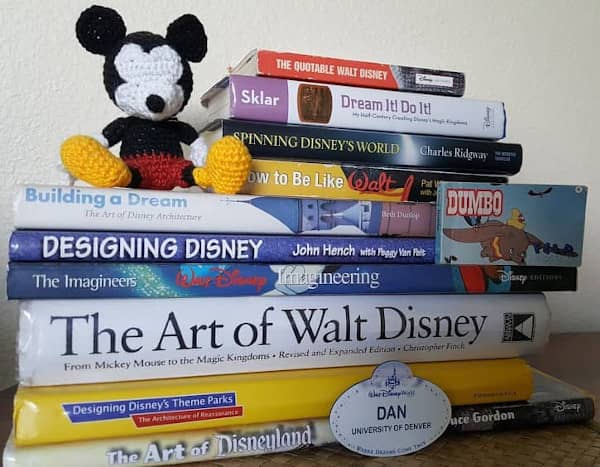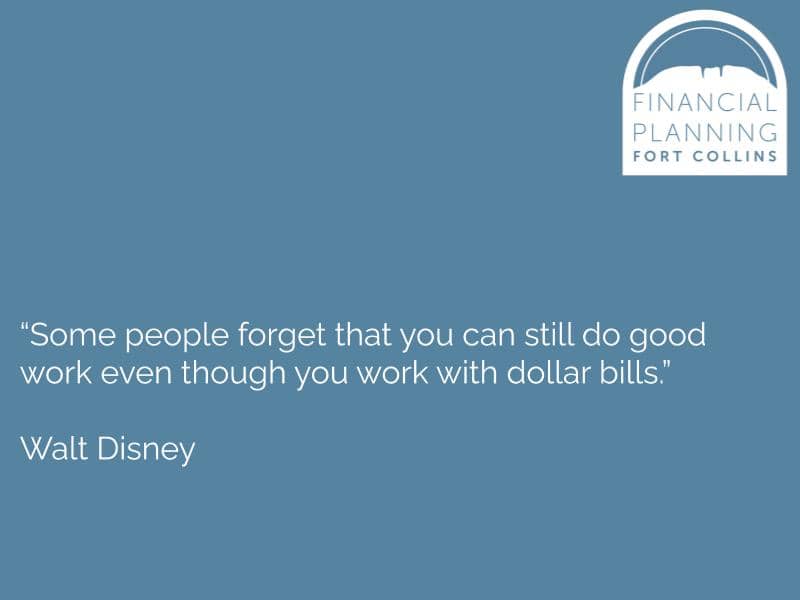
* This article was originally published on Sept. 9, 2020. It has been updated for 2021.
A proud quirk of mine is that I’m passionate about the historical Disney brand. Walt Disney accomplished amazing feats in his lifetime through his hard work, creativity, resilience, and his ability to inspire others to remain young at heart.
Now, why in the heck am I passionate about Disney? My family participated in many treks to Disneyland when I grew up in San Diego, and we made trips to Walt Disney World in Florida a few times, too. Growing up with the Disney Channel (DuckTales … WOO-OO!) and the Mickey Mouse cartoons, my passion for Disney increased through my younger years and still remains in adulthood. I admire Disney’s consistent mission to promote good values while entertaining families so the entire family can create memories together — versus merely entertaining the kids or the adults separately.
When I need to relax from life’s demands, one of my hobbies is to read books about Walt Disney and the Disney company. This continued passion allows me to learn many lessons about business, creativity, teamwork, branding, leadership, and even money.
Welcome to this blog about the lessons I learned from Disney. It’s fun to share the information I’ve absorbed through my years of reading many books, working in Florida’s Tomorrowland in 2007 as part of the Disney College Program, and my lifelong enthusiasm for this brand.
1. See Money as a Tool.
Many people get caught up in the need to have money. This need isn’t supported with any reasoning on how to use money, but people feel secure just by having money for the sake of having money.
Instead of obsessing over the amount in your bank account, see money as a tool to do fun things. Here’s a great quote from Walt Disney:
“Money is something I understand only vaguely, and think about it only when I don’t have enough to finance my current enthusiasm, whatever it may be. All I know about money is that I have to have it to do things. I don’t want to bank my dividends, I’d rather keep my money working. I regard it as a moral obligation to pay back borrowed money. When I make a profit, I don’t squander it or hide it away; I immediately plow it back into a fresh project. I have little respect for money as such; I regard it merely as a medium for financing new ideas. I neither wish nor intend to amass a personal fortune. Money – or rather the lack of it to carry out my ideas – may worry me, but it does not excite me. Ideas excite me.”
Overall lesson: Just like Walt, see money as a way to fund the life you want to live.
2. Don’t Try to Time the Stock Market.
Walt Disney smoked throughout his life, and this habit led his health to deteriorate quickly in his mid-sixties. On December 15, 1966, the world lost a visionary who made people smile through his films, theme parks, and hard work. While the world grieved, some people saw this as an opportunity to make money. A quote from Charles Ridgeway’s book titled Spinning Disney’s World: Memories of a Magic Kingdom Press Agent:
“One photographer, who worked for United Press International, saw an advance alert on the wire that day [the day Walt Disney died] and promptly called his broker to sell his Disney stock.
Like many others, he thought with Walt gone, the company would go downhill fast. As a matter of fact, the stock went up immediately, as Wall Street figured the company’s library of animated films would be sold at big profits.”
For a visual, here’s a historical chart showing Disney Stock (Stock ticker: DIS) from Jan. 2, 1962, to Sept. 15, 2021.
Timing the stock market is near impossible, so we recommend you discover investment strategies that make sense with your investment philosophy and then stick to your plan. Predicting how financial markets will react to news will only create stress and, typically, more strikeouts than home runs.
Overall lesson: If you wish to swing for the fences in the stock market, do so with your hobby money versus your retirement money.
3. Be Generous With Your Assets.
Toward the end of his life, Walt Disney began to focus on his legacy. One of his passion projects was developing the California Institute of the Arts (CalArts) to educate future animators so they could delight the world with their drawings. Walt Disney said about the program:
“CalArts is the principal thing I hope to leave when I move on to greener pastures. If I can help provide a place to develop the talent of the future, I think I will have accomplished something.”
He passed away before he could finish developing the school, but his earlier generosity paid dividends. Tommie Blount was Walt Disney’s personal assistant (called a secretary during this time) for around nine years, and Walt became a father figure to her. Walt walked Tommie down the aisle at her wedding and paid for her reception. Her husband described Tommie’s reaction to Walt Disney’s death in the following quote from Pat Williams’ book titled How to Be Like Walt:
“Tommie was devastated when Walt died, but she stayed on for a couple of years to help with unfinished projects, such as CalArts. Walt had been so kind to Tommie, and she wanted to help complete Walt’s last unfinished dreams.”
Overall lesson: Find opportunities to give back, and have faith that these good actions will help others. You’ll then create a more harmonious planet, which may repay the favor to you one day. If not, you can gain the confidence that you’re leading by example to inspire more generosity throughout the world.
4. Invest In Opportunities.
Invest in your future self by gaining new skills through school, continuing education programs, or by spending money on new technology. Walt Disney mortgaged his house to help fund his Disneyland vision in 1955. But even before that, a decision to fund new technology in 1928 paved the way for the opportunity to create Disneyland in the first place. As Walt Disney said, “It all started with a mouse.”
Movie theaters of the early 1900s hired piano players to play music alongside silent films. This all changed when “The Jazz Singer” premiered in 1927 as the first picture with synchronized sound. This new technology in the late 1920s began to excite people across the country, and Walt Disney was no exception. Mickey Mouse had already starred in two silent animated shorts, “Plane Crazy” and “The Gallopin’ Gaucho,” but it was time to upgrade.
Walt convinced his business manager and brother, Roy O. Disney, to fund a new Mickey Mouse cartoon with synchronized sound. Walt needed money to invest in new technology, animation techniques, and musical players to create an audio track to accompany Mickey Mouse’s animated adventure titled “Steamboat Willie.”
Walt didn’t want to cut any corners in this project since he knew this technology could launch Mickey Mouse’s popularity. He needed to convince Roy to fund this adventure as seen in a letter asking for more money:
“I am firmly convinced that it will be far cheaper in the long run to go into [the production of Steamboat Willie] in the proper manner… Let’s do things in the proper way and not try to save a penny here and there.”
The result: Audiences loved the mischievous Mickey Mouse whistling down the river in his steamboat and all the new gags in this animated short. The audience wanted more Disney, and we all know the rest of the story. To see the classic cartoon for yourself, watch the below video:
Overall lesson: Don’t be afraid to invest in your future self because new opportunities arise when you gain new skills.
5. Be Proud of Your Money.
I couldn’t write a Disney article about money without mentioning the famous Scrooge McDuck. In 2013, Forbes ranked Scrooge McDuck as the richest fictional character with a net worth of $65.4 billion (which is open to interpretation).
A gleeful smile is on Scrooge McDuck’s face when he dives into his legendary money pit. The lesson here is to learn that you can enjoy your money and not feel bad about possessing it.
Money doesn’t have to make you feel dirty, and you don’t need to view it as the root of all evil. People earn money through hard work — be it their own or their family’s. See it as something to be proud of versus as an evil tool. As Walt Disney said:
* This article was written by a Disney enthusiast for informational and educational purposes only. Financial Planning Fort Collins is not affiliated in any way with the Walt Disney Company or its affiliates.
